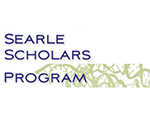MCB and SEAS assistant professor Doeke Hekstra has been chosen as a 2018 Searle Scholar. Each year, the Searles Scholar Program–administered by the Kinship Foundation and funded by the estate of pharmaceutical magnate John G. Searle–selects 15 promising early career investigators to receive $300,000 in funding over the course of three years.
Hekstra is the eighth MCB faculty member to receive this honor and will use the money to develop new techniques for studying the movement of proteins. “It is very encouraging that they are excited by the research I proposed,” Hekstra says. “The funding gives me room to further invest in new research directions.”
“Doeke has a wonderful research program that aims to explain biological phenomena using basic physical and chemical principles,” says MCB department chair Venkatesh Murthy. “He is a shining representative of our department’s aspiration to house creative scientists that combine theory and experiments. My colleagues and I are pleased that the prestigious Searle Scholars Program has recognized his accomplishments and promise.”
“Young faculty, me included, are often still at the point where they need to show that they can independently do interesting and important work,” he adds. “The Searle Scholarship, and similar grants, provide a way to work on exciting new ideas before these bear fruit.”
Hekstra’s lab is tackling one of the most pervasive problems in molecular biology: The atoms in proteins shift around, changing the molecule’s shape. Some of these motions are important for how biomolecules work. However, most existing techniques for discerning a protein’s structure require the protein to be “frozen” in one position. “Think of proteins as little machines,” Hekstra says. “At the moment, we can make pretty pictures of them and identify some of their states when we can trap the protein in these states. But, we don’t really have ways yet to study proteins the way a mechanic might study a machine—by pushing or pulling on chains, wheels, pedals or brakes and seeing what moves together.”
However, Hekstra hopes that a technique he began developing at University of Texas Southwestern may enable scientists to “see” proteins in action. “We established that one can use strong electric field pulses to directly push and pull on charged atoms in proteins, and that we can see the resulting motions using short X-ray pulses,” he explains. “Because it combines electric fields (EFs) and X-rays, we call this EF-X… We may have, in principle, a general way to study the mechanical properties of proteins: which states can they be in, how they move to change from one state to another, and what kinds of forces that requires. The Searle Scholarship will enable us to take the first steps to see if we can really do this.”
Understanding how proteins move may open up the possibility of creating human-made proteins to carry out biochemical tasks. “My hope is that EF-X experiments can teach us how to become mechanical engineers of proteins—not just to study proteins and their evolution, but ultimately to fix and design them,” Hekstra says.
by Diana Crow



